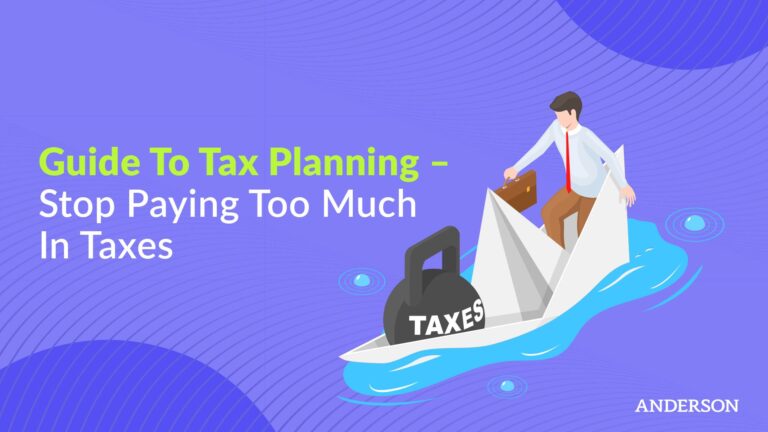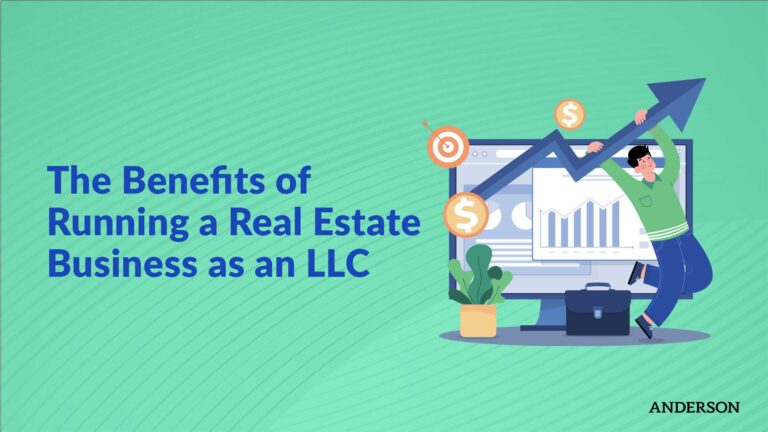Updated October 2, 2021
Small businesses need to pay taxes. While these state and federal taxes can eat away at business profits, small business owners armed with the right information can make better business decisions and engage a business tax professional to minimize tax losses.
How to File Small Business Taxes
- Gather your financial records.
- Find the right IRS forms.
- Fill out your IRS forms.
- File your taxes by the deadline.
Corporate taxes or business taxes are leveraged against the net profits of a company or corporation. Net profits are calculated by subtracting business expenses from the total gross income of the business. However, most small businesses are not legally recognized corporations or companies; they are most often an LLC, partnership, or sole proprietorship—each of which is considered a “pass through entity” by the Internal Revenue Service (IRS).
A pass-through entity sees its profits reported on the personal tax forms of the business owner. As such, these business profits will be taxed at a rate applicable to the individual business owner and their income. Personal income tax rates vary by state, and some states have no personal income tax, such as Alaska, Florida, Nevada, South Dakota, Texas, Washington, and Wyoming.
Small business owners in these states, operating their small business as an LLC, sole proprietorship, or partnership, can benefit both from operating their business in that state and keeping their business structure out of the corporate realm.
However, in the other 41 states across the United States, business owners will most likely need to pay business taxes—both Federal and State taxes. No matter where they’re located, small businesses will also need to pay payroll taxes, unemployment taxes, and worker’s compensation taxes.
Some small businesses that produce a substantial amount of cash flow will most likely be structured as a corporation. Recent changes to the tax laws—such as The Tax Cuts and Jobs Act of December 2017—favor corporations with a flat tax rate of 21% instead of relying on an income-based table.
This means that individuals seeing substantial income from their small business might be taxed more if they let the taxes pass through to their personal tax forms—so by structuring their business as a corporation and putting themselves on a payroll, they stand to minimize their tax losses. This is something to consider as you undertake the task of paying the taxes for your small business.
How to File Small Business Taxes
1. Gather Your Financial Records
Depending on what type of small business you run, you will have different types of details on your financial records—but the overarching principle is that financial records show you (and the IRS) where your business income came from and where it went. In the main, there are four types of financial records.
A balance sheet. This provides a summary of the overall health of your small business by listing its assets like property, inventory, patents, and cash and liabilities such as debt, rent, payroll.
Shareholder equity statement. The difference between your business’s assets and liabilities is referred to as shareholder equity. It’s basically the amount your business would be worth if all its assets were sold to eliminate liabilities; the remaining amount would belong to shareholders if your business had any. However, most small businesses do not issue stock or have shareholders.
Income statements. These documents show company revenue over a fixed period of time, which is usually one year. The income statement will also show costs associated with earning that revenue, leaving a bottom line that shows net earnings or losses.
Cash flow statements. These will show the inflows and outflows of cash, which is not limited to revenue. In fact, revenue is factored into operating expenses, which may include ancillary expenses such as the depreciation of property. A cash flow statement will also show the inflow and outflow of cash from investing and financing activities.
This is a good reason to use electronic, cloud-based record keeping systems like those offered by QuickBooks and Quicken. It’s even better If a small business owner can afford to retain a competent accountant for small business bookkeeping. Such a professional or firm can keep track of income, assets, and liabilities and help the business pivot as appropriate to make moves that will help them save on their taxes.
Free Strategy Session with an Anderson Advisor
Receive a detailed risk assessment to assist in lowering problem areas that could wipe out all of your assets with one wrong move. Speak with an Anderson Professional Advisor to get your FREE Strategy Session.
Limited-Time Offer: ($750 value.)
2. Find the Right IRS Forms
Choosing the right form to report and file your taxes will depend on how your small business is structured. If you run your business as a sole proprietorship, your business income will pass through to your own personal tax form, where it will be reported on a Schedule C Attachment. If you have structured your business as an LLC and are the sole owner, you can also use a Schedule C.
But if your small business is structured as a Corporation or an LLC elected to be treated as a corporation, you will have to file a corporate tax return with Form 1120. Of course, you will then still need to file your own personal tax return, but you won’t need a Schedule C attachment. If you put yourself on a payroll for your business, you’d receive a W2—from your own business—and report your earnings as wages.
If your small business is a partnership, you will file your taxes with Form 1065, U.S. Return of Partnership Income. You’ll be asked to report the total income of the partnership, and deduct salaries, payments to partners, rent, repairs, and other expenses. An addendum of schedules must accompany your Form 1065, such as the Schedule B (which includes detailed questions about your partnership), Schedule K (income and expenses), Schedule L (balance sheet), and possibly a few others, depending on the type of partnership you have structured.
As you can see, picking the right forms is somewhat complex, as is filling them out. Moreover, there might be certain tax advantages to structuring your business one way over the other—and in many states, restructuring your small business once it’s set up can be costly, if not impossible. These are all good reasons to solicit the services of a firm or accountant familiar with professional tax strategies.
3. Fill out Your IRS Forms
Filling out forms for the IRS is probably not one of your most anticipated business activities over the course of the calendar year. That’s why you’ve got to buckle down and take care of it, preferably in one sitting. Give yourself an afternoon or an evening to fill out the appropriate forms from start to finish—plan on spending time to file state taxes in addition to Federal Income Taxes.
Remember, if your small business is structured as a non-corporate LLC or a sole proprietorship, you’ll file your taxes on Section C of your personal income tax return. Section C is a relatively simple two-page form that allows you to list all your business expenses and deduct them from your total earnings to find your net profit or loss. You can then copy this number onto your personal tax form.
If your business is a corporation or a partnership, you’ll have more forms to fill out, requiring more detailed information about your business and its operations. Again, this is why it’s important to keep a good running record of everything going on in your business, preferably using some sort of cloud-based software solution more impervious to theft or loss.
While completing the tax forms might not be the best thing about owning a small business, if you have been keeping track of your income and expenses, then filling out the tax forms will just largely be a matter of taking information from your records and entering it into the appropriate spaces on the forms.
4. File Your Taxes by the Deadline
Tax deadlines are one thing you don’t want to miss because missing the deadline can trigger all sorts of other fines, fees, and penalties—or extra paperwork to avoid them.
If you’re filing your earnings as a non-corporate LLC or sole proprietorship on a Schedule C, it becomes subject to the same rules as your general Form 1040 and is due by the same date: April 15th. A separate filing deadline does not apply.
If you have structured your business as a corporation, your deadlines might vary. A C-Corp needs to file its taxes with a Form 1120, which must be filed by the fifteenth day of the fourth month following the close of your previous tax year—which for most taxpayers, still happens to be April 15th.
As a side note, you can change the dates of when your business tax year starts and ends. This can be accomplished by filing some paperwork with the IRS and changing your business tax year to that of your fiscal year. Your fiscal year is the 12-month cycle that results in reporting the earnings and losses of your business to yourself and shareholders. Some businesses in industries that have a cyclic nature—and where the busy season ends at some time other than December 31st—choose a unique date for the end of their fiscal and tax years. As a result, the actual date of a tax deadline can be very different for these businesses.
If your corporation is an S-Corp, you will need to file a Form 1120S, which must be filed by the fifteenth of the third month from the end of your previous tax year. For most taxpayers, this is March 15th (although, as mentioned, you can change your tax year). This 1120S form must be sent separately to the IRS, and not with your personal income tax return.
Small Business Taxes Frequently Asked Questions
What percentage does a small business pay in taxes?
Private and government organizations like IRS and The National Federation of Independent Businesses (NFIB) keep track of small business statistics, which have pointed to an average effective tax rate of 19.8%. Keep in mind that the NFIB also estimates that 75% of businesses are pass-through entities. Under the latest tax reforms, (with, at the time of this article, no terms of expiration in sight) corporations are taxed at a fixed rate of 21%.
How much can a small business make before paying taxes?
A report from the Small Business Association at the beginning of this past decade found that 60% of small business sole proprietorships had a net income of less than $10,000, while a little over 3% had incomes of at least six figures. By contrast, 18% of small businesses structured as S-Corps had a net income of more than $100,000.
What this tells you is that an overwhelming majority of small businesses do not make a lot of money. They may be side sources of income for the business owner or they might just be starting out in business…but some of them do succeed and make a decent net profit.
At the same time, it is noteworthy that these businesses are structured as a simple sole proprietorship, which does not require a complex business structure—further emphasizing the fact that these businesses are the colloquial “side-hustle” or are not set up properly. Businesses that invest more time and energy into their business (as indicated by the greater complexity of the S-Corp, which requires a payroll, among other things) see more financial success; in terms of reaching the six-figure mark, six times the success of sole proprietorships.
The bottom line is that how much money you make with a small business has nothing to do with business taxes. For one thing, there are plenty of creative and legal strategies that can be leveraged to minimize your tax losses—so don’t let taxes spoil your optimism about opening a small business.
What taxes are required for small businesses?
If your small business has employees on a payroll, you will be required to pay payroll taxes. However, payroll taxes are not taken from business profits, but rather withheld from employee pay. These taxes average around 7.65% of the employee’s gross income and help the state and federal government defray the cost of beneficial programs and services like Social Security and Medicare, among others.
You will also need to pay unemployment taxes and workers compensation taxes (also called workers’ compensation insurance). These taxes are a form of mandated insurance to protect your employees, should they become unemployed through dismissal or injury on the job.
It’s important to keep in mind that businesses with an employee payroll need to file these payroll taxes (such as Social Security and Medicare taxes) quarterly with a Form 941. If you don’t have employees and your business is structured as a sole proprietorship or non-corporate LLC, you don’t need to worry about filing these taxes. This is another reason why it’s good to retain the services of a business accountant, so you don’t have to allocate time to this task every three months.
In some states, certain small businesses will have to pay a Gross Receipts Tax. This is somewhat like a sales tax in that the tax is used to pay for public services (such as schools), but it is different in that it is not itemized or subject to small business tax deductions. The gross receipts—that is, total revenues—are taxed at a flat rate, most often to fund the capital expenses of a public works project or ongoing program. As such, the Gross Receipts Tax is a polarizing topic among economists and sole proprietors and self-employed individuals.
If your business sells certain items subject to an Excise Tax in your state (such as cigarettes in many states) you will need to file these as well. This estimated tax burden will need to be factored into your decision to sell certain products, and one common reason some states impose these taxes is to direct certain patterns of consumer behavior, such as avoiding health hazards like cigarettes. You pay your estimated taxes on a quarterly basis.
Certain other types of business might be subject to double taxation. In this situation, the taxable income of company profits is first taxed as part of business taxes. It is then taxed again as income when distributed to shareholders. Of course, your business does not issue shares of stock, this is irrelevant.
In summation, the types of taxes you pay on your small business will vary, and in large part, it depends on what your small business does and whether or not you have human capital involved in its operations (that is, employees).
Do businesses pay Capital Gains Tax?
Depending on your business, you might also have to pay Capital Gains Taxes. These are taxes levied against the sale of assets. For example, if your business involves buying distressed properties, rehabbing them, and selling them for profit. Assets held more than a year are considered long-term and taxed at a variable Long-term Capital Gains tax rate, while assets held less than a year are short-term capital gains reported as income.
If your business is involved with real estate, you will also need to pay property tax. If your business is involved in wealth management or other types of investing activity, you will have to pay tax on dividends. Again, this estimated tax burden will need to be part of your business calculations if you are engaged in the buying and selling of assets over a short period of time. Remember, you pay estimated taxes on a quarterly basis.
How much should a small business set aside for taxes?
When you work for someone else and are paid through their payroll, your taxes are automatically removed with every paycheck. But when you run your own business, taxes are not paid until the end of the year. This can lead to a problem for self-employed professionals and business owners who do not plan to pay taxes accordingly. They might have already spent their business income, which will force them to borrow money to pay their taxes or go into tax debt until next year. As a general rule of thumb, a small business should set aside 30-40% of business income to use for taxes.
While you can project business earnings for the next few months, you never know how things will go. Sometimes failure to plan ahead can leave your business in a serious lurch. This is why it’s important to work with a professional accountant or accounting firm to help navigate and organize the realm of small business taxes. They will also be able to offer some strategies to minimize your tax losses, such as properly allocating company profits back into the business and writing them off as expenses against your total revenue.
What are business tax deductions?
Business tax deductions are a great way for small business owners to find a silver lining in the cloud of business expenses. These tax deductions might range from matching contributions to a company-sponsored retirement plan to capital expenses like buying a new delivery truck. It’s important to keep a running tab of your losses and expenses so that when tax season hits and you are engaged with tax preparation, you will be able to optimize your efforts to reduce your tax obligation.
With a comprehensive list of expenses and losses, you can work with your tax advisor to alleviate your tax burden by listing each and every one as a deduction that reduces the amount of your tax obligation for the taxable year. Tax law does vary by state, so a tax advisor can ensure that you itemize each deduction, and possibly leverage other strategies to obtain a tax credit (such as charitable contributions) for your state.
How to File Small Business Taxes
Taxes should not stop you from opening a small business, but you should also get informed about what those taxes are, how much they’ll cost, and when they’re due. But even armed with this knowledge, you will often find it easiest in terms of your business operations to outsource this task to a qualified tax professional. Beyond the benefits they will bring you in terms of reduced stress and more time for your business, they will also be able to help you implement strategies that can save your business money by reducing your tax liability.
Individuals who work for a company are often frustrated by their employment taxes. But business owners can be equally frustrated by the need to pay self-employment tax. However, as business owners, they actually have more recourse to leverage strategies to reduce the burden of their estimated tax payments. In other facets of their business, a business owner would not be averse to hiring a consultant to improve their marketing, or product, or operations. The same should be true for taxes. A good tax advisor can save a limited liability company or other small business types a sizable amount of money, which is just as good as increasing profit in other areas—because a penny saved is a penny earned.
Bonus Video
Free Strategy Session with an Anderson Advisor
Receive a detailed risk assessment to assist in lowering problem areas that could wipe out all of your assets with one wrong move. Speak with an Anderson Professional Advisor to get your FREE Strategy Session.
Limited-Time Offer: ($750 value.)















